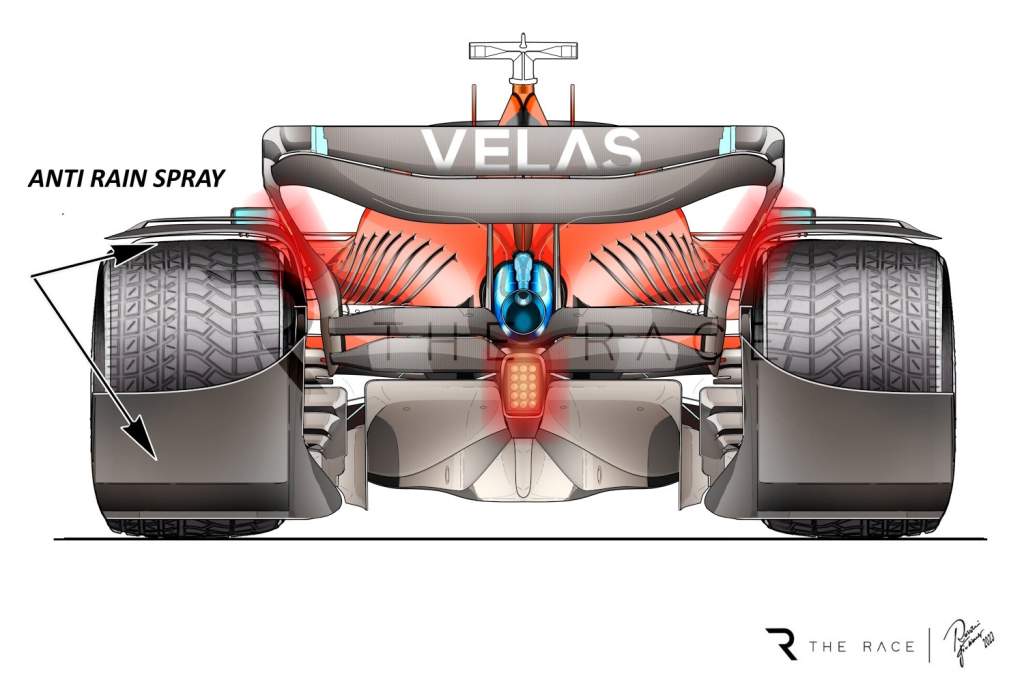Up Next

The FIA’s first prototype spray guards as tested at Silverstone after the British Grand Prix weekend didn’t work as hoped and it’s clear that a lot more work needs to be done before there’s a workable solution. I’m not convinced the target of reducing the problem of visibility-reducing spray by 50% is practical or possible.
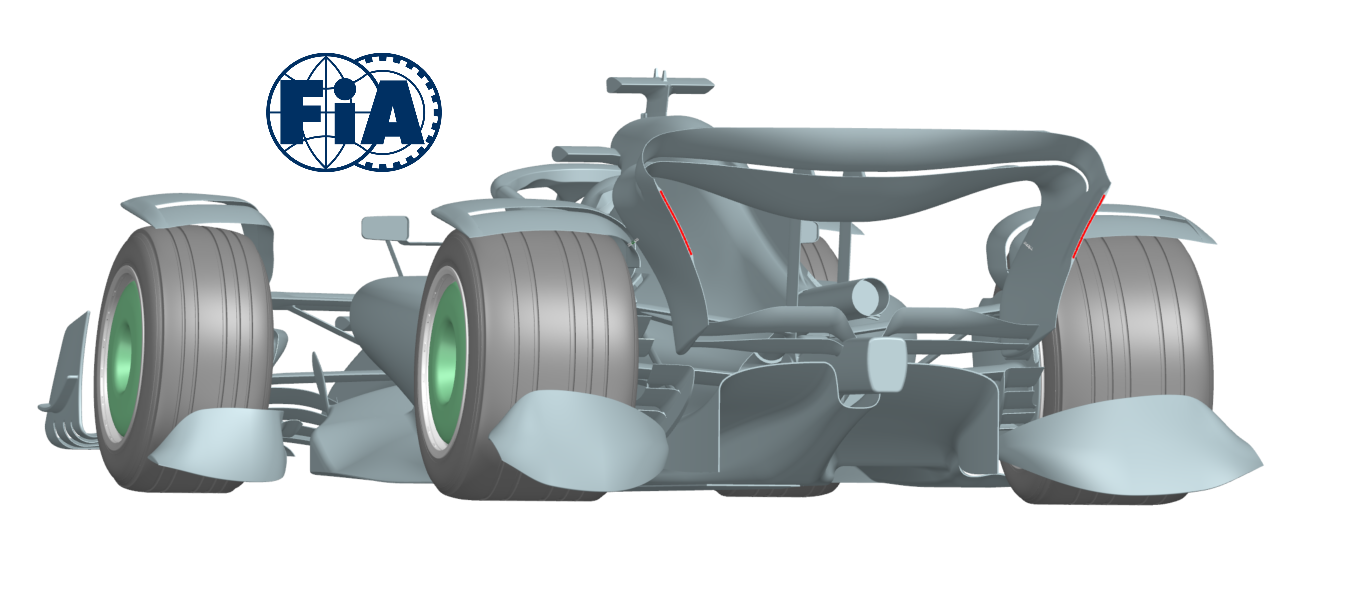
From what we’ve seen of the first FIA design iteration, I’m not surprised it didn’t work well. The amount of spray that’s produced behind the car is enormous and it’s not just about what the tyres disperse, it’s because these cars are like giant vacuum cleaners sucking everything up and throwing it out the back.
There’s certainly the potential to make some improvement, but to judge the scale of the problem you only need to sit behind a truck on a motorway in the wet and then multiply that by 100.
So what should the next attempt at the design look like?
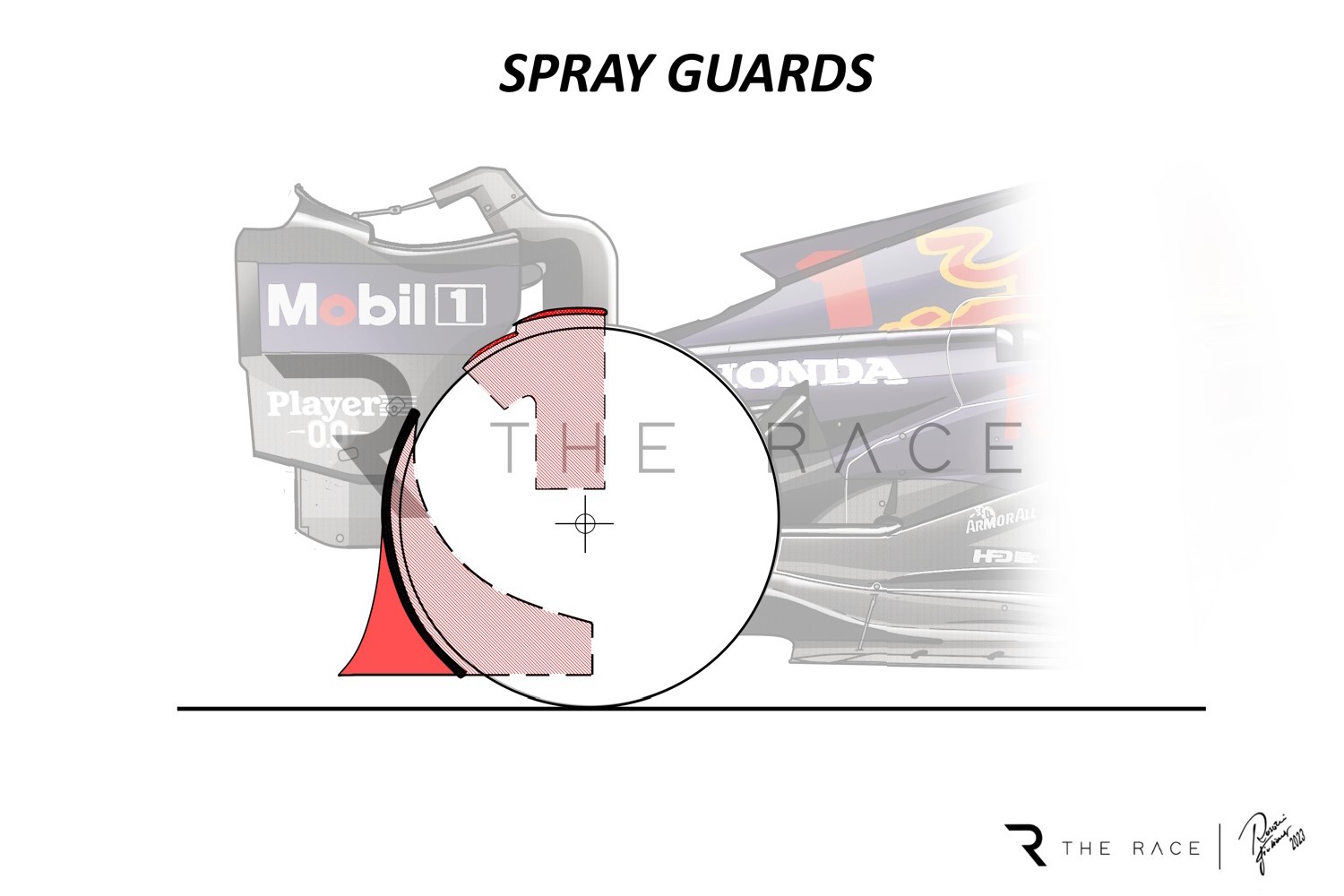
If you consider the normal airflow around a rotating wheel looking at it from the outside, with the flow coming from the left to the right up to about 10 o’clock, this flow separates and goes around the inside or outside of the tyre. From about 10 o’clock upwards, the airflow starts to go over the top of the tyre.
At the bottom of the tyre you get the tyre squish, which is where the air between the tyre and ground is squeezed and squirted out of the sides. The characteristics of the flow when it’s wet will not be all that much different and on top of that the tread pattern on the intermediates and wets is designed to pump water out from the contact patch to reduce the risk of tyre aquaplaning, which is necessary but it all adds to the problem.
This is ignoring the rest of the car and what influence that flow structure will have on where the flow, air or water is concentrated on in the overall flow structure design philosophy.
You basically have the high pressure in front of the tyres dispersing about 80% of the flow around the sides of the tyre and 20% over the top of the tyre. That flow is being pulled into the void created by the tyre. This means you get a lot of movement around the sides all trying to join up in the wake of the wheel. It happens especially down at the rear of the tyre contact patch area where the tyres is just coming off the ground, because this is the lowest pressure area.
This means it’s the rear lower quarter of the tyre from roughly the axle centreline downwards that you need to do something with. This explains why the initial FIA’s design is a two-part component, the lower section trying to manage that flow that is coming off the contact patch and the upper part to manage the flow that is being pulled over the top of the tyre.
This means you need the lower part of the spray guard to be as low as possible, while leaving somewhere for the airflow and the water to escape. You could make the spray guards wider than the car, but that wouldn’t be viable because it would make it too difficult to change wheels with them on and – probably much more importantly – extremely vulnerable in car-to-car contact.
Remember, these need to be designed to be bolted on in (I would suggest) less than five minutes before a session or race in extreme wet conditions or during a red-flag stoppage, then left on for the duration of that event.
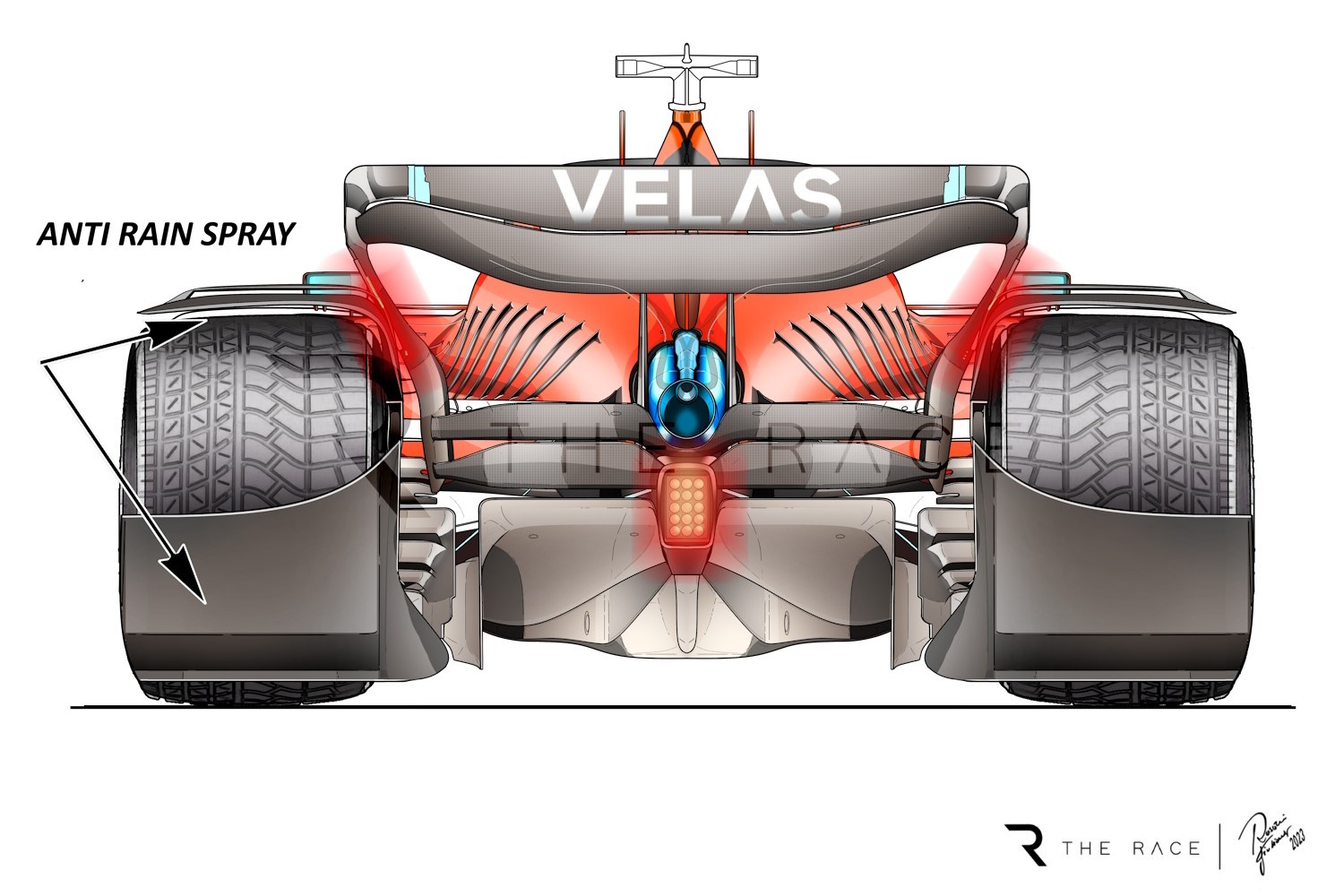
The key is that you need to pick up the airflow which is being displaced by the front or even more importantly rear tyre and contain it. Because of the low pressure underneath the car this flow is being pulled under the car, and it is full of water droplets. The spray guards need to bring it down into the low-pressure area behind the tyres and then allow it to escape onto the track surface. This means you could have a low-down mudguard that could be created by extending the initial FIA design.
Nothing is ever new. If you look back to the beginning of 1991, we had front wing endplates that created a channel and ran around the inside of the front wheel (red ellipse). They ended in line with the trailing edge of the front tyre – this was to do exactly the same and reduce the amount of airflow pulled under the flat floor leading edge.
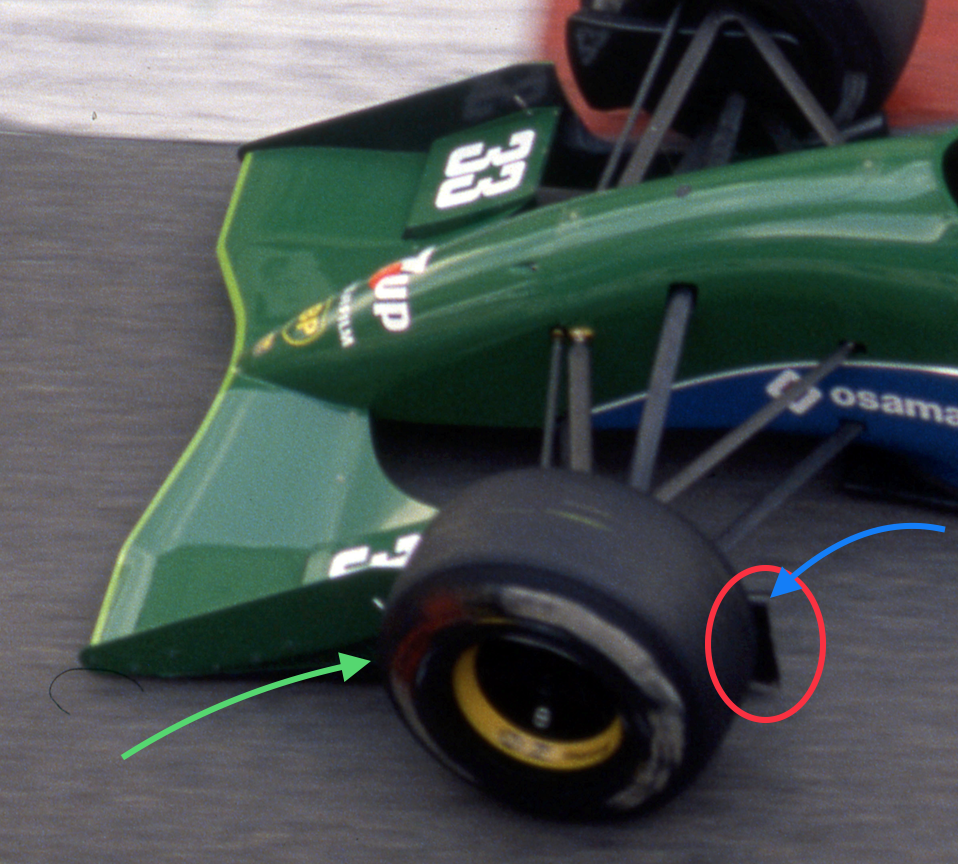
The scroll on the top trailing edge (blue arrow) generated a vortex that improved the suction through the channel from in front of the tyre (green arrow).
There was also a section between the centreline of the front axle and the trailing edge of the tyre that was allowed to be as low as the flat floor itself, which meant it actually ran on the track surface with the careful use of titanium skids and ceramic pellets reducing the wear.
You could have it effectively merge into the existing brake ducts via a couple of mechanical fasteners.
The current design of the spray guards mounts directly onto the uprights and obviously the difference that these components would generate on the load of the existing brake ducts would need to be taken into consideration. But that’s not beyond the might of each and every F1 team.
As for the front and rear design, I’m pretty sure they would need to be subtly different to suit the different flow structures around each end of the car. Then again, that is also going to be slightly different from team to team so an initial concept could be fairly similar and then, when circuit-tested, it could be optimised as required to maximise the effect on each end of the car.
I suppose the big question is – why not just have a wheel pod that fully encloses the tyres? Yes, all is possible, but that would change what is an open-wheel formula and if that is acceptable then it should be done for any conditions. I wouldn’t be a fan of that solution, and I hope most of our readers agree.
Personally, I would like to see something as subtle as possible. Perhaps it’s time to give all the teams a little extra windtunnel and CFD time and ask them to set a couple of young work experience aero department students on the project and then amalgamate the various designs into an all-round potential standard solution.

